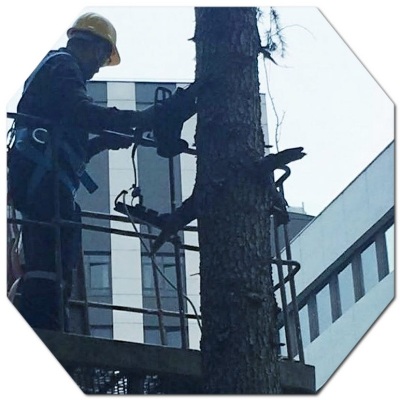In machine learning, the term “tree pruning” refers to a technique used to optimize decision trees, which are a type of predictive model. Decision trees are a popular algorithm used for both classification and regression tasks. They work by making a series of decisions or splits based on the input features, ultimately leading to a prediction or decision at the tree’s leaves.
Tree pruning is aimed at preventing overfitting, which occurs when a decision tree captures noise or random variations in the training data, leading to poor generalization to new, unseen data. Pruning helps to simplify and improve the performance of a decision tree by reducing its complexity and ensuring that it captures the most relevant patterns in the data.
The process of tree pruning involves:
- Growing the Tree: Initially, a decision tree is grown using the training data, allowing it to capture various splits and patterns.
- Pruning: After the tree is fully grown, the pruning process begins. Pruning involves iteratively removing branches or nodes from the tree that do not contribute significantly to its predictive power or that lead to overfitting.
- Validation: During the pruning process, the performance of the tree is evaluated using a validation dataset or through techniques like cross-validation. This helps to determine the impact of removing a particular branch on the model’s accuracy.
- Cost-Complexity Pruning: One common method of pruning is cost-complexity pruning, which involves systematically removing branches while considering a balance between the model’s complexity (number of nodes) and its predictive accuracy. This helps to avoid overfitting while maintaining model performance.
The goal of tree pruning is to find the right level of complexity that minimizes the risk of overfitting while still capturing the important patterns in the data. Pruning creates a simpler and more generalizable decision tree that is less likely to make predictions based on noise in the training data.

Tree pruning is relevant to machine learning techniques that utilize decision trees, including algorithms like Classification and Regression Trees (CART), Random Forests, and Gradient Boosting Trees. It’s an essential step in the model-building process to ensure that the trained model can generalize well to new, unseen data. Pruning a tree with a machine >>
What is data pruning in machine learning?
In machine learning, data pruning refers to the process of selecting and removing specific instances or features from a dataset to improve the quality and performance of a model. Data pruning aims to enhance the model’s generalization capabilities by reducing noise, outliers, and irrelevant information that might hinder the model’s ability to learn meaningful patterns from the data.
Data pruning can involve two main approaches:
- Instance Pruning: Instance pruning focuses on removing individual data points or instances from the dataset. This is typically done to eliminate outliers or noisy data that could negatively impact the model’s training and performance. Outliers, in particular, can skew the model’s learning process and lead to poor generalization.
- Feature Pruning: Feature pruning involves selecting and retaining only the most relevant features or attributes of the data. Irrelevant or redundant features can increase the dimensionality of the data and lead to the “curse of dimensionality,” where the model might struggle to learn meaningful patterns due to the high number of features. Feature pruning aims to simplify the dataset by selecting the most informative attributes.
Data pruning is beneficial for several reasons:
- Improved Generalization: Pruning helps the model focus on the most relevant and informative data, leading to better generalization to new, unseen examples.
- Reduced Overfitting: By removing noisy or irrelevant data, data pruning can help prevent overfitting, where the model learns the training data too closely and performs poorly on new data.
- Faster Training: Smaller, pruned datasets can lead to faster training times, as the model has less data to process.
- Simpler Models: Pruned datasets can lead to simpler models that are easier to interpret and understand.
It’s important to note that data pruning should be done carefully and based on a thorough understanding of the domain and the dataset. Pruning too aggressively or without proper consideration can lead to the loss of valuable information. Data preprocessing techniques, such as outlier detection, feature selection, and dimensionality reduction, can be used to perform data pruning effectively. What is machine tree pruning technique? >>
Before performing data pruning, it’s recommended to thoroughly analyze the dataset, understand the impact of removing certain instances or features, and validate the effects of pruning on the model’s performance using techniques like cross-validation.
